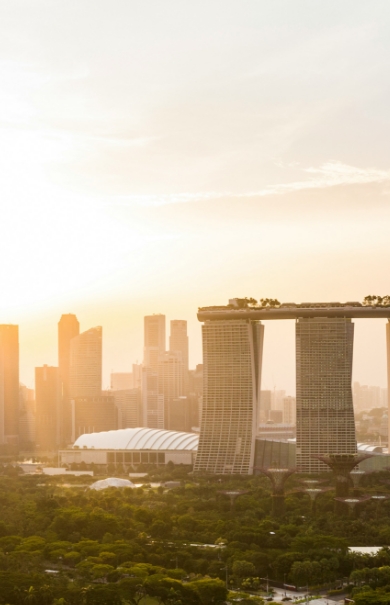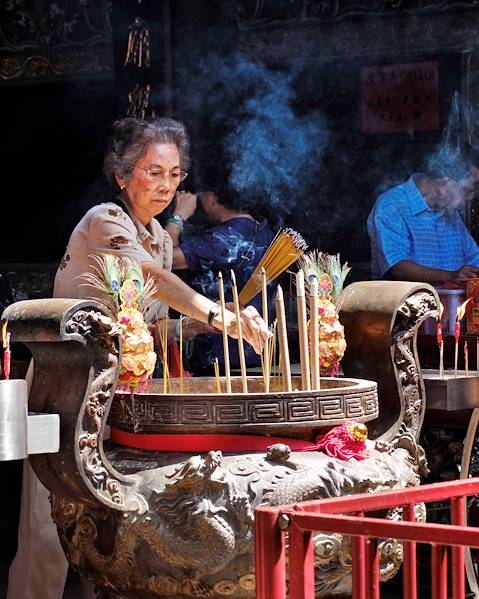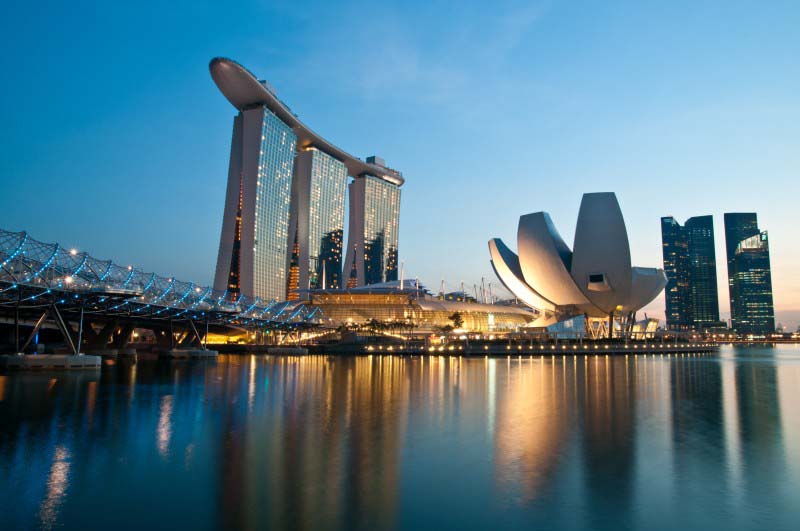Population
5.64 million inhabitants (2021)
Official language
According to the Constitution of Singapore, Malay is Singapore’s official language.
Language spoken
There are four commonly used languages: English, Chinese, Malay and Tamil.
People
Singapore is the epitome of a melting pot. Chinese predominate, making up some three-fourths of the population. Malays are the next largest ethnic group (13.5%) and Indians the third at 9%.
Religion
Singapore is multi-religious, with five main religious groups: Buddhism, Taoism, Hinduism, Islam and Christianity.
National Holiday
Singapore’s national holiday is August 9th, which commemorates the country’s nationhood and independence from Britain in 1965.
Holiday Schedule
January 1: New Year’s Day
February 1 – 2: Chinese New Year
April 15: Good Friday
May 2: Labour Day
May 3: Hari Raya Puasa
May 16: Vesak Day
July 10 – 11: Hari Raya Haji
August 9: National Day
October 24: Deepavali
December 25: Christmas Day
History
Singapore has gone through many names. Early Chinese accounts of the sovereign island country refer to it as ‘Pu-luo-chung’ (island at the end of a peninsula), while AD 1298 records call it ‘Sea Town’. By the 14th century it had taken on a whole new name, ‘The Lion City’ or ‘Singapura’. Originating from the Sanskrit words simha (lion) and pura (city), it came to be thanks to a Prince from Palembang who spotted a lion on the isle and deemed it as his kingdom.
Until the 19th century, the city was ruled by the five kings of ancient Singapura. It flourished as a trading post for vessels – thanks again to its position as the meeting point for sea routes – which quickly caught the attention of the British. Or Sir Thomas Stamford Raffles to be precise. Lieutenant-Governor of Bencoolen (now Bengkulu) in Sumatra, he landed in Singapore on 29 January 1819. He recognised the potential of the island and negotiated a treaty with the kings to establish Singapore as a main trading post. This quickly grew into an entrepot trade hub that attracted immigrants from China, India, the Malay Archipelago and beyond.
Singapore’s prosperity suffered a major setback during World War II, when it was attacked by the Japanese on 8th December 1941. British forces surrendered to the Japanese on Chinese New Year (15th February), which was the largest surrender of British-led forces in history. A new ruler meant a new name too. But its time as ‘Syonan-to’ (‘Light of the South Island’) was to be short-lived, as by 1945, the island was handed back over to the Brits and became a British Crown Colony in 1946.
Jumping forward a few years to 1959 and Singapore was well on the road to independence. By 1959, the country held its first general election and Lee Kuan Yew became Singapore’s first prime minister. By 1965 it had joined and left the Federation of Malaya, Singapore, Sarawak and North Borneo (now Sabah) to become an independent and sovereign democratic nation, which it still is today.
Policy
Singapore is a parliamentary representative democratic republic. The president of Singapore is the head of state, the prime minister is the head of government and the multi-party system. Executive power is exercised by the Cabinet, who have general direction and control of the government. Government is split into three branches: the legislature, executive and judiciary, who abide by the Westminster system.
Etiquette
Like the Brits, Singaporeans love a good queue, so make sure to line up in an orderly fashion. And if you’re on public transport, resist the urge to crack open a cold one or munch on a packet of crisps. Eating and drinking are strictly prohibited from buses and trains, and a S$500 fine can be imposed if you are caught. How else do you think they maintain their status as a world-class public transport system? If you head to a Hawker Centre and notice an inconspicuous tissue packet on an empty table, leave it and find a seat elsewhere, they are used to bagsy a table.
Shopping
If you love shopping, then you have come to the right place. Shop till you drop at its malls on Orchard Road and Marina Bay Sands, where you’ll find every big name brand known to man. Or, if you’re after a more authentic experience that trades glossy shop fronts for quaint street stalls, head to Pagoda Street in Chinatown. Browse antique furniture shops and trinket tables before wending your way down to Haji Lane, one of Singapore’s best kept secrets, for an afternoon of independent boutique browsing.
Food and drink
A melting pot of culture, it comes as no surprise that Singapore’s food and drink scene is the same. Original recipes came from early migrants and got remixed into uniquely Singaporean dishes, while its cocktail culture has only found its feet in the last decade. Sipping a Singapore sling at the iconic Raffled Hotel Long Bar should be high on your list if you’re after good drinks and views. Even if heights aren’t for you, a trip to a couple of its speakeasies for black plum vinegar cocktails infused with green barley will certainly do the trick.
When it comes to food, Singapore is your oyster. Chomp on roti prata mid-morning from Mr and Mrs Moghan’s, slurp on spicy Nyonya laksa (white rice noodles soaked in a lemak coconut milk-based spicy broth) for late lunch, and crack into chilli crab in one the city’s myriad Hawker Centres. Arguably Singapore’s most famous dish, it is typically served spicy in a sweet and sour tomato sauce with mantous (steamed buns), perfect for mopping up the leftover sauce with.
















